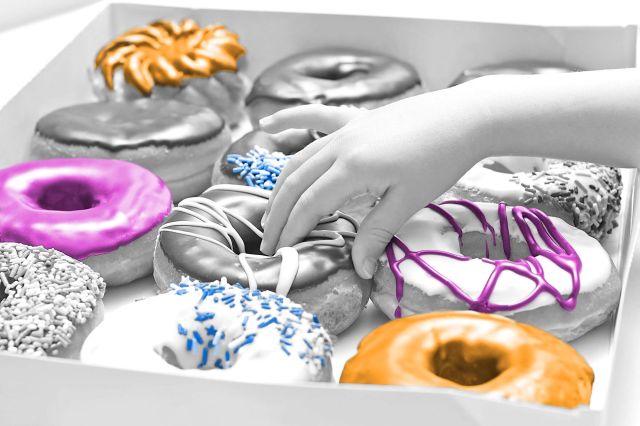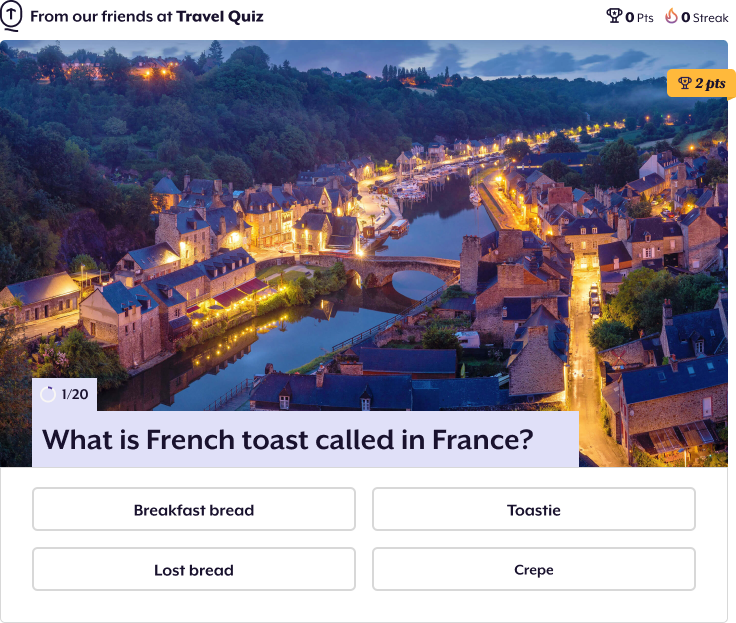
“Continental Breakfast” Is a British Term for Breakfast on the European Continent
Many hotels offer guests a free “continental” breakfast with their stay, but what exactly makes a breakfast “continental”? The term originated in the mid-19th century in Britain as a way to distinguish the hearty English breakfast — typically consisting of eggs, bacon, sausage, toast, and beans — from the lighter fare found in places like France and other Mediterranean countries in continental Europe. It typically consists of pastries, fruits, toast, and coffee served buffet-style. As American breakfasts also tended to feature outsized helpings of protein and fruits, the “continental” moniker proved useful for hotels on the other side of the Atlantic as well.

The First Breakfast Cereal Was Called “Granula” and Had To Be Soaked Overnight
Today, hundreds of varieties of breakfast cereal — both hot and cold — can be found in supermarkets around the world, but the very first manufactured cereal was quite different from the ones we’re used to eating today. In 1863, a nutritionist named James Caleb Jackson, who ran a health spa and resort in upstate New York, came up with the idea to bake graham flour into brittle, flaky cereal, which he thought would aid in digestion. The one downside of his “granula” concoction was that it had to soak in milk overnight to be edible. Around the late 1870s, another nutritionist and sanitarium owner, John Harvey Kellogg, created a similar cold cereal concoction using wheat flour, oatmeal, and cornmeal. He also called it “granula.” After a legal battle between these two cereal pioneers, Kellogg changed the name of his invention to “granola,” and, later, patented his invention as Corn Flakes.

Kellogg’s Corn Flakes Once Flew to the Moon
Not content with just filling breakfast bowls on Earth, the Kellogg brand exported its Corn Flakes to space as the breakfast of choice for the astronauts of the Apollo 11 mission in 1969. Fruit-flavored Corn Flakes (as well as Frosted Flakes) were part of the astronauts’ recommended 2,500-calorie daily diet. The cereal was stored in packets, and astronauts needed to add 3 ounces of water before eating them. Corn Flakes were an attractive candidate for space food because they were nutritious, lightweight, compressible, and zero-gravity edible. On early missions, they also needed to go without refrigeration. Today, the National Air and Space Museum still has packets of unopened Corn Flakes from the Apollo mission in its collection.
More Interesting Reads

French Toast Wasn’t Invented in France
Contrary to its name, French toast — sliced bread soaked in milk and beaten eggs and then pan-fried — existed before modern-day France ever took shape. Historians trace the dish to a fourth-century Roman cookbook called Apicius, which describes a recipe similar to French toast called pan dulcis. Once France coalesced into a nation, the French called the recipe pain a la Romaine (“Roman bread”) before eventually adopting its modern name pain perdu, or “lost bread.” In fact, many countries around the world use a translation of that name, because the dish was originally made with stale bread being saved from going to waste. North America refers to the concoction as French toast in the same way that fried potatoes are also decidedly “French” — French immigrants popularized both dishes in the 17th and 18th centuries.

Humans Have Been Eating Pancakes for Several Thousand Years
Although French toast has origins in the Roman Empire, it’s likely that no breakfast food is as old as the humble pancake. Although scholars can’t be certain, pancakes — or at least a close approximation of them — likely existed in the Paleolithic era because of their relatively simple ingredients. Stone Age cooks probably created flour from nearby plants, mixed it with water, and cooked pancakes on a hot rock. Those same basic ingredients are what make up the pancake today. The first documented evidence of the pancake comes from Ötzi the Iceman, a 5,300-year-old human mummy encased in ice in the Italian Alps. After his discovery in 1991, scientists examined his stomach and determined that his last meal contained wheat mixed with charcoal, suggesting Ötzi had eaten a pancake cooked over coals.

Doughnuts Were Originally Called “Oily Cakes”
The doughnut made its first appearance in North America in 17th-century New York City, then a Dutch colony known as New Amsterdam. This fried dough recipe was known in Dutch as olykoeks, or “oily cakes.” However, oily cakes were missing one important innovation of the modern doughnut — the hole in the center. That particular characteristic didn’t take shape until the 19th century. Although there are several competing theories, it’s likely that New England ship captain Hanson Crockett Gregory, spurred on by indigestion due to his mother’s oily cakes, decided to cut out the doughier middle of the cake. Gregory soon discovered that his mother’s cakes received a more even fry, and thus the modern doughnut was born.












